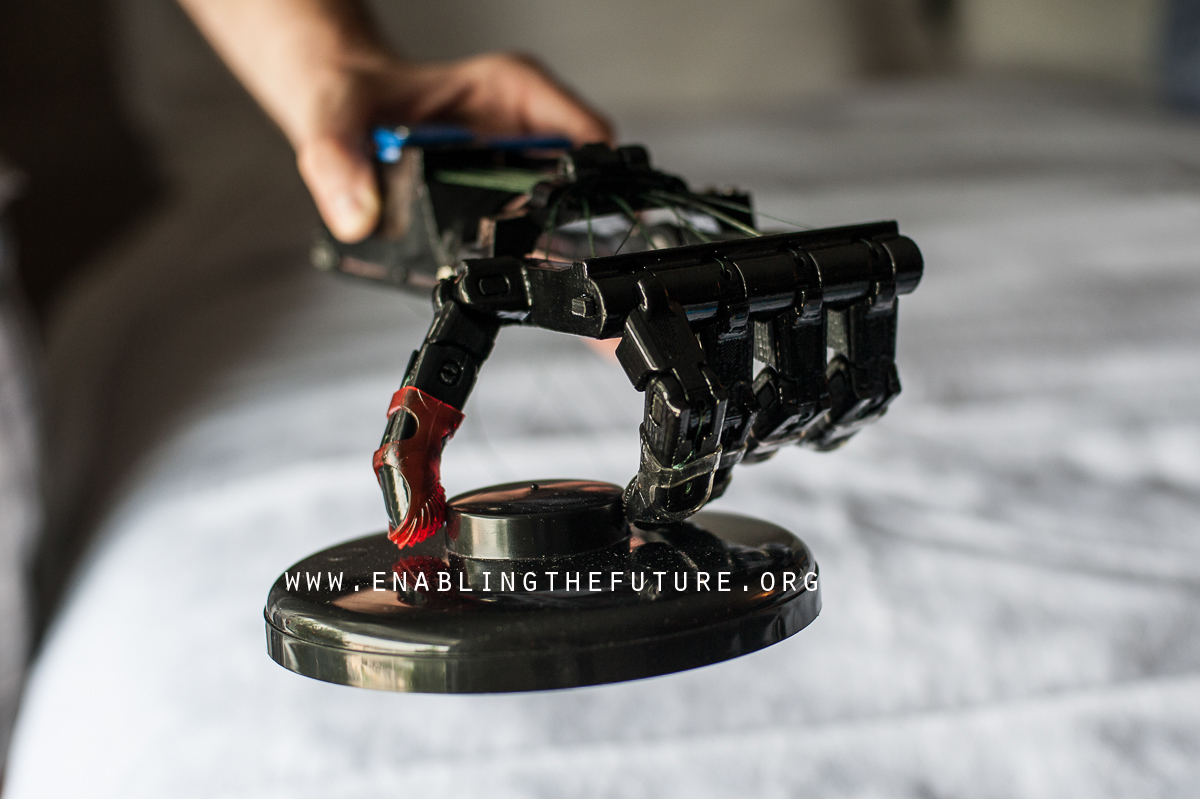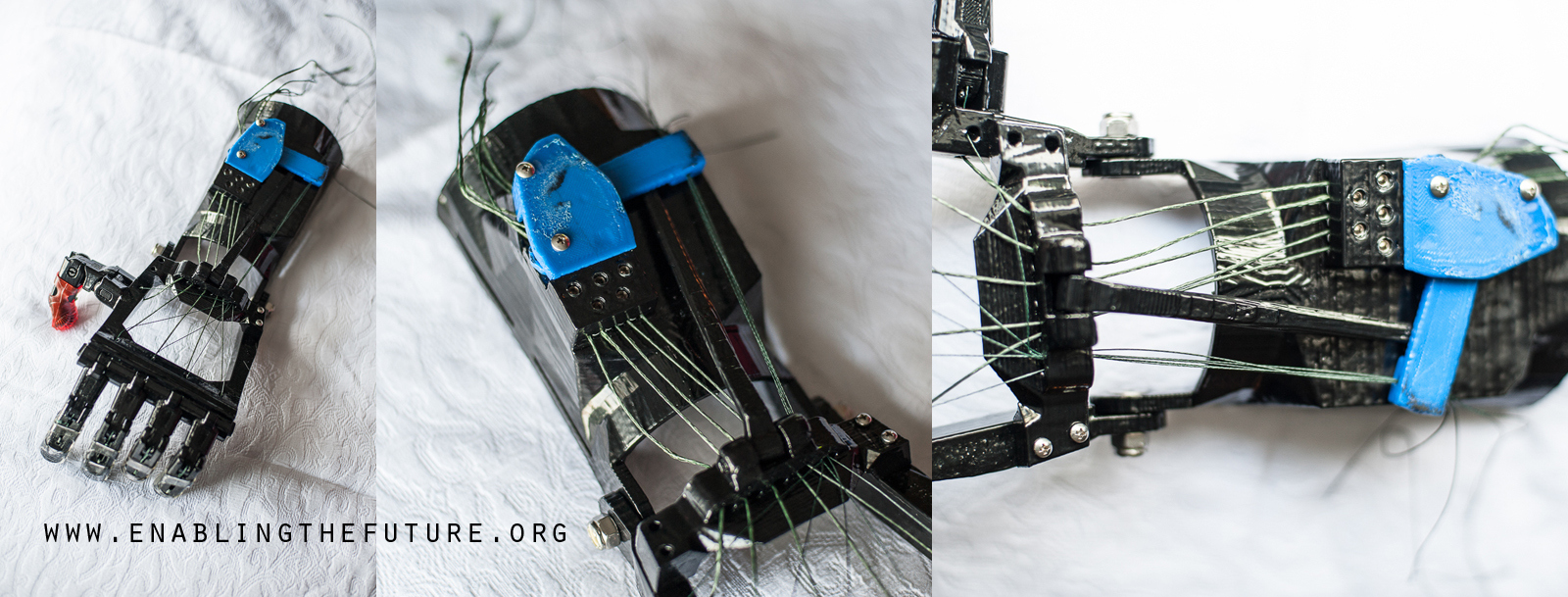The Flextensor is one of the latest additions to the range of 3D printable prosthetics created by e-NABLE, a network of passionate volunteers using 3D printing to give the world a “Helping Hand.”The stand out feature of the new addition to this growing range of basic living, lifestyle-enabling 3D printed parts from e_NABLE is that this robotic hand does require a wrist to direct the force to pick up paraphernalia as this increasingly design-honed set of contemporary artificial body parts removes the need for elastics.
Peter Binkley (profbink) is one of the most active designers in the e-NABLE community. Peter is the creator of The Ody Hand and The Talon Hand, the latter of which is right up to version 2.6. These are two of the most successful designs created via e-NABLE so far. Now Binkley steps forward with his next serious advancement to the growing range of enabling devices.
It is common knowledge for regular readers in 3D printing circles that e-NABLE was originally inspired by two strangers some ten thousand miles apart. One, a prop maker from the United States and the other a carpenter from South Africa, who came together to create a prosthetic hand device for a small child in South Africa, who then took the bolder, and beautifully altruistic, gesture to give the plans to the hand away for free. What started out as a few creating something for a child in need, has grown into a movement of families, designers, parents, engineers, three dimensional printing enthusiasts, and more.
e-NABLE’s Peter recalls: “In the summer of 2013, my son Peregrine and I saw a video of Liam, a little boy who was born without fingers on one hand, just like Peregrine. He was wearing a mechanical 3D printed hand and using it to pick up objects. We downloaded and printed off aSnap-Pin Robohand and fitted it to him by cutting and heat-bending the plastic parts, then mounting them onto a leather “shoe and sleeve.”Thus began our journey with open-source assistive devices. The fingers close via cables that run on the front side of mechanical fingers, and they open via elastics that run in channels on the back side of those fingers.
After wearing and using his new hand, Peregrine started making suggestions to improve the design. One of his first wishes after fitting the hand was to somehow reduce or eliminate resistance as he closes his hand. To grasp something small requires a lot of sustained force, since the five elastics fight back with a high level of resistance and that resistance increases as the hand closes more — the problem worsens down the road, since most elastics quickly degrade, especially under stress. As elastic materials lose their springiness, they need to be shortened to effectively open the hand: which increases the problem of ramping resistance and decreasing the distance of stretch before the elastics bottom out.I started looking into ways to reduce or eliminate resistance...”
With massive cost efficiencies, as much as $50 (e_NABLE) vs $50000 (traditional prosthetic): worth greater still is the life-style enablement, life-quality enhancement and general well-being for good health. The Flextensor, further reduces the number of components needed to make a quality prosthesis, including eliminating the requirement for elastic all together.
Peter says: “…A mechanical solution that would completely eliminate elastic resistance. In early November 2013, after tossing ideas around, I sketched a mechanical device on a piece of paper. As the idea took shape, it occurred to me that such a device would be superior from a therapeutic standpoint – since the user works both the flexors and extensors of the wrist.The extensor was still too complicated… I decided to have all the extensor lines anchoring through the same hole.Then I joined the extensor block with the pivot to further simplify the design.”
The Flextensor adds to an increasingly impressive library of 3D printable files by the project that already includes: The Cyborg Beast, The Talon Hand, The Odysseus Hand, Second Degree Hand, Owen Finger Replacement and The Limbitless Arm. The range of printable prosthetics increases further when we take a look over at MakerBot’s Thingiverse, totaling some twenty-one items. People are engaging with, and developing, the designs.
Peter closes: “I’m pretty satisfied with the mechanics, but need to focus on lowering the profile to make it a more compact fit. I also plan to incorporate a tensioner block instead of the set screw cable anchor I’ve been using. Then I’ll need to stress test it and make sure it will hold up to heavy use.With the next version, I am changing the name to Flextensor, since it does the job of both a flexor and extensor.I would love for some of our very talented friends to put some energy into this type of extension system!”




